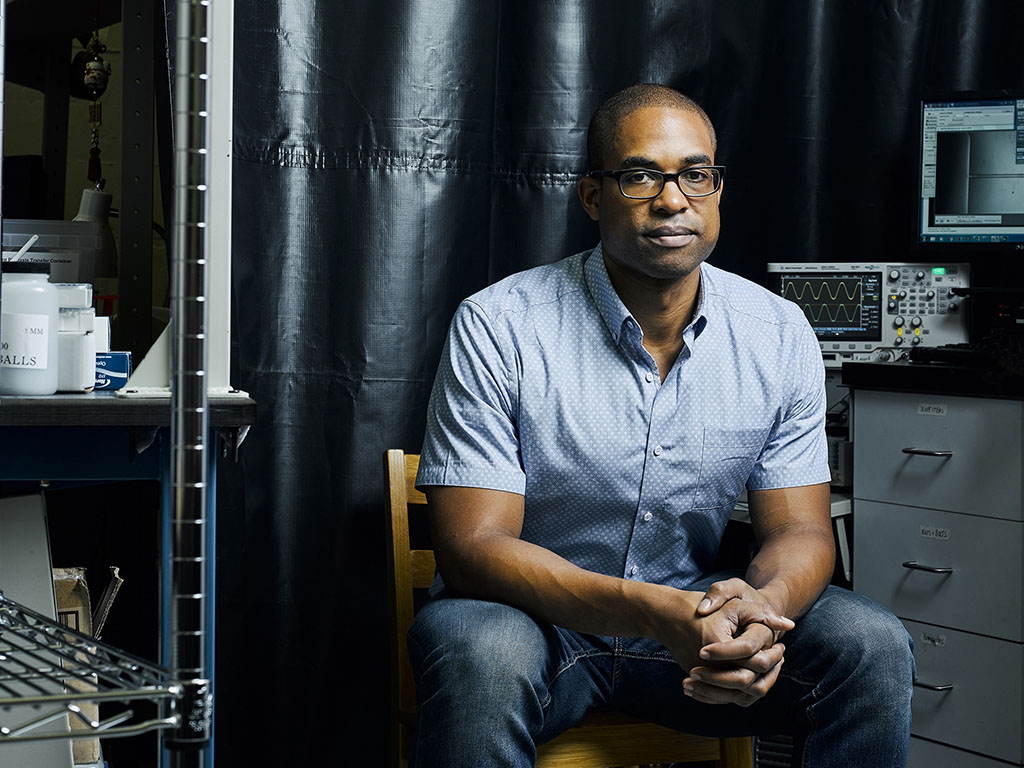A new era for cell therapies
Mary Beth Gallagher | Department of Mechanical Engineering
Dec. 13, 2022
Genetic engineering and personalized cell therapies could transform healthcare. In recent years, stem cells and gene-editing tools like CRISPR have been making headlines for the possibilities they offer to treat diseases, including cancer. But engineering cells is a slow, labor-intensive process, making it difficult to produce personalized therapies at scale.
The startup Kytopen, co-founded by Professor Cullen Buie and Dr. Paolo Garcia, offers a solution that could lead to the mass production of genetically engineered cells. MechE Connects spoke with Buie to discuss how Kytopen has grown since its founding.
How did you and Dr. Garcia come upwith the original idea for Kytopen?
In many ways, the genesis of Kytopen started in 2013. After attending a conference on synthetic biology, I received a DARPA Young Faculty Award to look at the problem of getting genetic material into bacterial cells. That funding allowed me to hire Paulo Garcia as a postdoc. Two years later, we participated in the NSF Innovation Corps program, which helps researchers translate their technologies to applications beyond the lab. Through that program, we interviewed over 100 people in industry and uncovered a huge problem in genetic engineering: the delivery of genetic material to cells was too slow, too manual, and low throughput.
I remember we visited one synthetic biology company that was trying to automate the process. Everything was automated except the actual gene delivery step. For that part, two staff scientists would take ninety-six well plates off the line and manually pipette material into the cell samples, one-by-one, then perform electroporation. We immediately identified this as the problem area we wanted to solve and raised more research funding to develop a new technology that ultimately led to Kytopen.
Kytopen pivoted from focusing on bacterial cells to human cells. What inspired that change?
When we founded the company in 2017and were conducting market research, researchers at companies would repeatedly ask, “Hey, have you ever thought about using this on mammalian cells or T cells or stem cells?” When you hear that once or twice, you take note. We probably heard it thirty times. We recognized there was a lot more value to be made in that space. There’s a whole industry that is growing and being developed in which clinicians would like to take your cells and re-engineer them to fight your disease. They require similar technologies as what we were developing for bacteria – they also needed them to be high throughput and produced at large volumes. Around the same time, we received seed funding from The Engine. That gave us the resources needed to explore this space. Once we found this potential application in human immune cells, we hired several immunologists to help us adapt the technology from working on bacteria to working on human cells.
Can you explain how Kytopen’s technology actually works?
The technology we invented at Kytopen, called Flowfect®, uses electric fields and a continuous fluid flow at the same time to open pores in cells and deliver genetic materials, like mRNA and DNA. Using microfluidic devices, we’re applying an electric field while flowing at very high flowrates. The high flow rates impose shear stress on the cells that, coupled with the electric field, allows you to open pores. Weuse much less electrical energy than you typically would need for electroporation thanks to this mechanical aspect. As it turns out for many different cell types, this leads to better physical outcomes for the cells. They respond better to this combination of mechanical and electrical stress, because we don’t have to shock them as much as traditional electroporation. Because we’re using these very fast flowsto induce mechanical strain on the cell, the process is high throughput. We’re flowing at very high flow rates, which means we can process a lot of cells. Flowfect® allows us to process billions of cells per minute. This is crucial for many of the therapies being developed, which need around a million cells per kilogram of the patient. This opens up a world of possibilities for safe immunotherapies, including immuno-oncology and gene-editing applications.
Can you combine the technology developed by Kytopen with gene-editing tools like CRISPR?
Currently, the clinically approved way to deliver material into a cell is to use viruses. A virus will invade the cell and integrate its payload into the genome. This is really expensive. It takes a lot of engineering and development to create a virus that can do this. There are also safety concerns about how the virus can integrate into a patient’s cells in a way that may result in negative health outcomes. As a result, there’s been a move to non-viral vectors, like CRISPR. Kytopen is essentially a technology that can enable CRISPR-based gene editing for personalized therapies. There are other gene-editing methodologies, but CRISPR is known as one of the easiest and is being explored the broadest. However, you need to find a way to get CRISPR reagents into the cell, and that’s where Kytopen and Flowfect® come in. We provide customers and their manufacturing partners with our device so they can integrate it into their manufacturing process and transform the way they conduct cell engineering.



